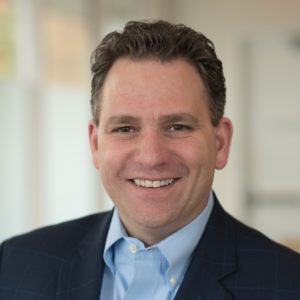“All my advisor peers talk about how we manage $3 billion or $5 billion, not how we manage 50 small businesses or 100 small plans,” Joe DeNoyior, President of HUB Retirement and Wealth Management, said. “Nobody gets recognition for that.”
It’s a problem, especially now that SECURE 2.0 has passed. Noting it’s numerous provisions and incentives, especially those geared towards small businesses, DeNoyior, Immediate Past President of the American Retirement Association, argued distribution is now the challenge, as well as how to effectively provide support to small businesses and small plans.
“From a sales perspective in the small 401(k) space, the revenue doesn’t necessarily line up with the amount of work it takes to get there,” he admitted by way of a call to action. “You can do the PEPs and the MEPs and all that, which are great solutions, but I think this is a great training ground for the next-level advisor, those that have been doing it longer, to take the initiative and responsibility to help solve the coverage gap.”
Perennial Problem
That coverage gap is a cause for concern, a perennial problem that attracted the federal government’s attention and fears from the private sector that it might step in to “solve” it, leading many to think it’s the last, best chance the industry has to address the issue.
“I don’t know about last chance, but I would be in a rush to do it, and we’re in a rush to do it,” he explained. “SECURE 2.0 can move the needle. I’m sure we’re going to have more banks get into it since it’s a natural distribution to the small businesses.”
Is he worried about the government taking it over?
“I’m always worried about the federal government. An eventual federal takeover of private retirement plans, which was recently proposed, is a huge deal. Many of the 'nice to haves' put in SECURE 2.0 are really good at serving the larger population that’s already covered. But we have an opportunity with the population that is not covered. I would actually say, not only do we have an opportunity, but we also have a responsibility.”
Despite his firm’s size, he’s always served small businesses, even before the Hub acquisition when it was still Washington Financial Group.
“I felt like we had to long before we understood what MEPs and PEPs were,” he said. “We used the same recordkeeper for small plans, same fund menu, we did quarterly online educational meetings even back then.”
The theory is, at least, that small plans will grow into big plans, so it’s worth the initial effort, something with which DeNoyior agreed.
“One of our very large plans now was the startup that got acquired, and we won the acquisition plan. For the most part, they grew into nice clients, but if you’re servicing them properly, there are other opportunities. We do take care of all their needs. And most importantly, those are really good relationships. Small businesses are driving our economy. It’s fun to sit down and talk with those folks.”
He reiterated the need to figure out distribution in the wake of SECURE 2.0, and to “make a commitment and then go for it.”
Pointing to NAPA and ARA members specifically, he warned of competitors potentially flooding the space.
“Banks have that distribution advantage,” he concluded. “They have an employee sitting in the branch; they deal with the business owner and get turned over to a call center or specialist. That’s a huge advantage. The pricing will be the same across the board, so I don’t think the pricing is an advantage. I think it’s distribution and being able to serve Main Street USA.”

